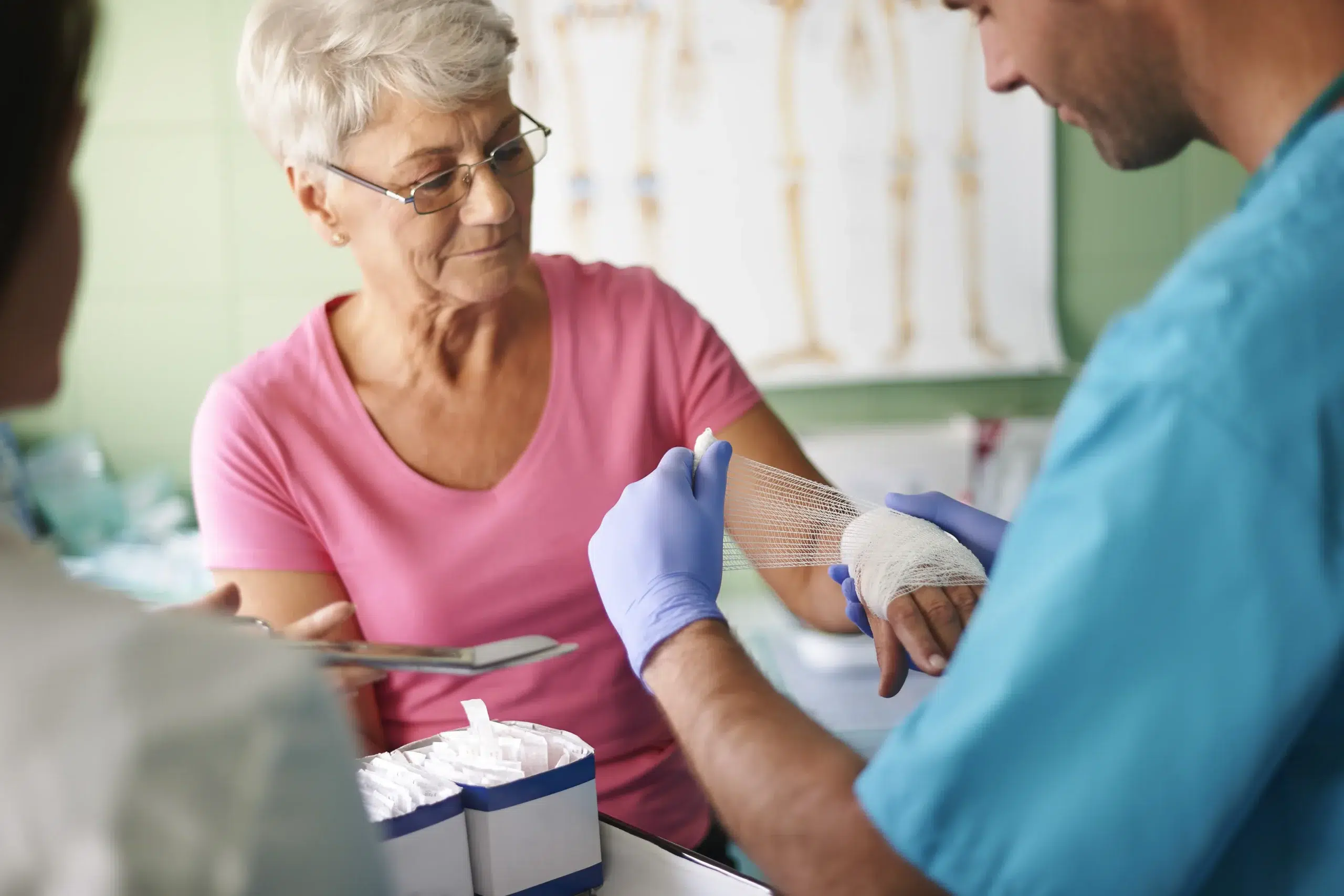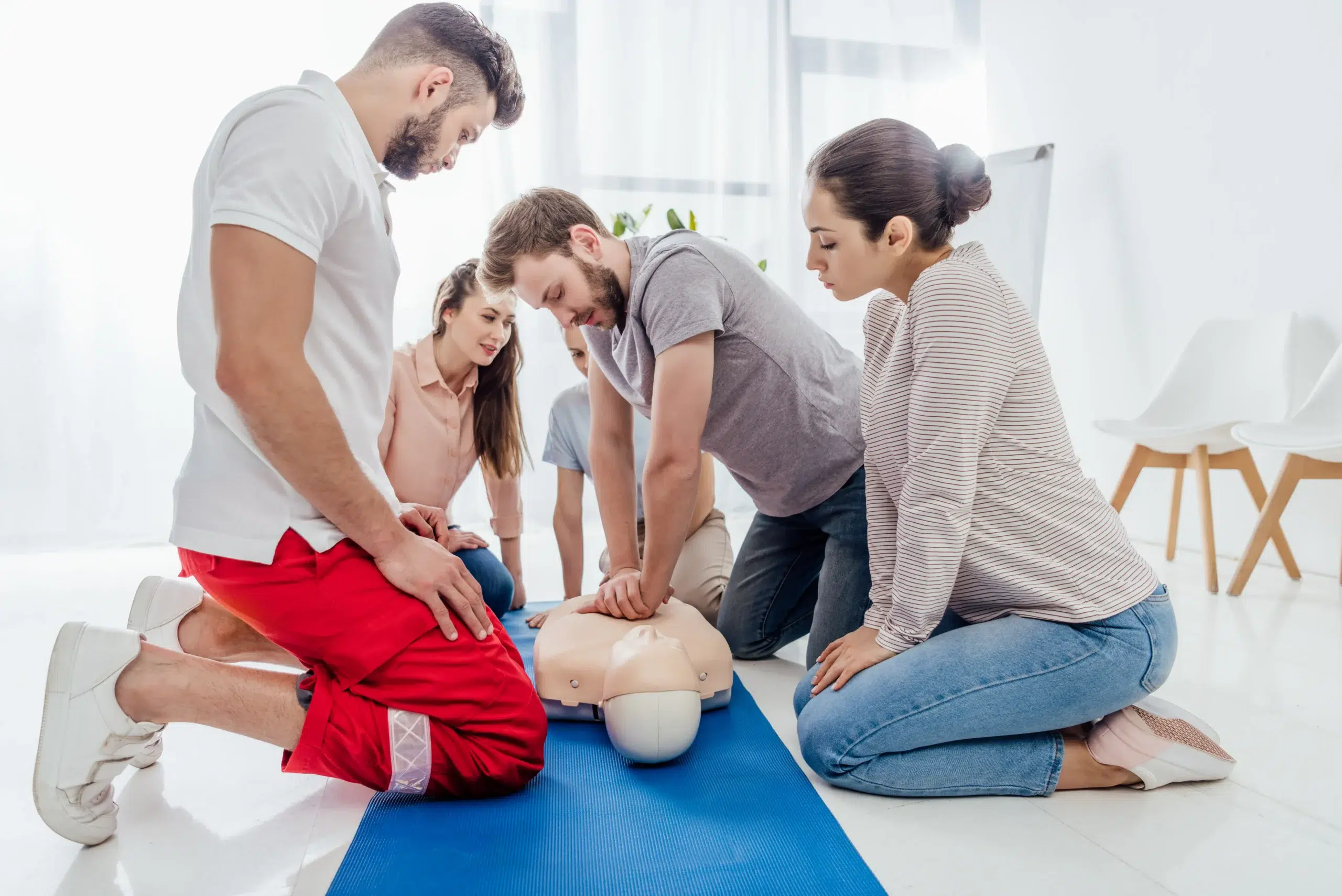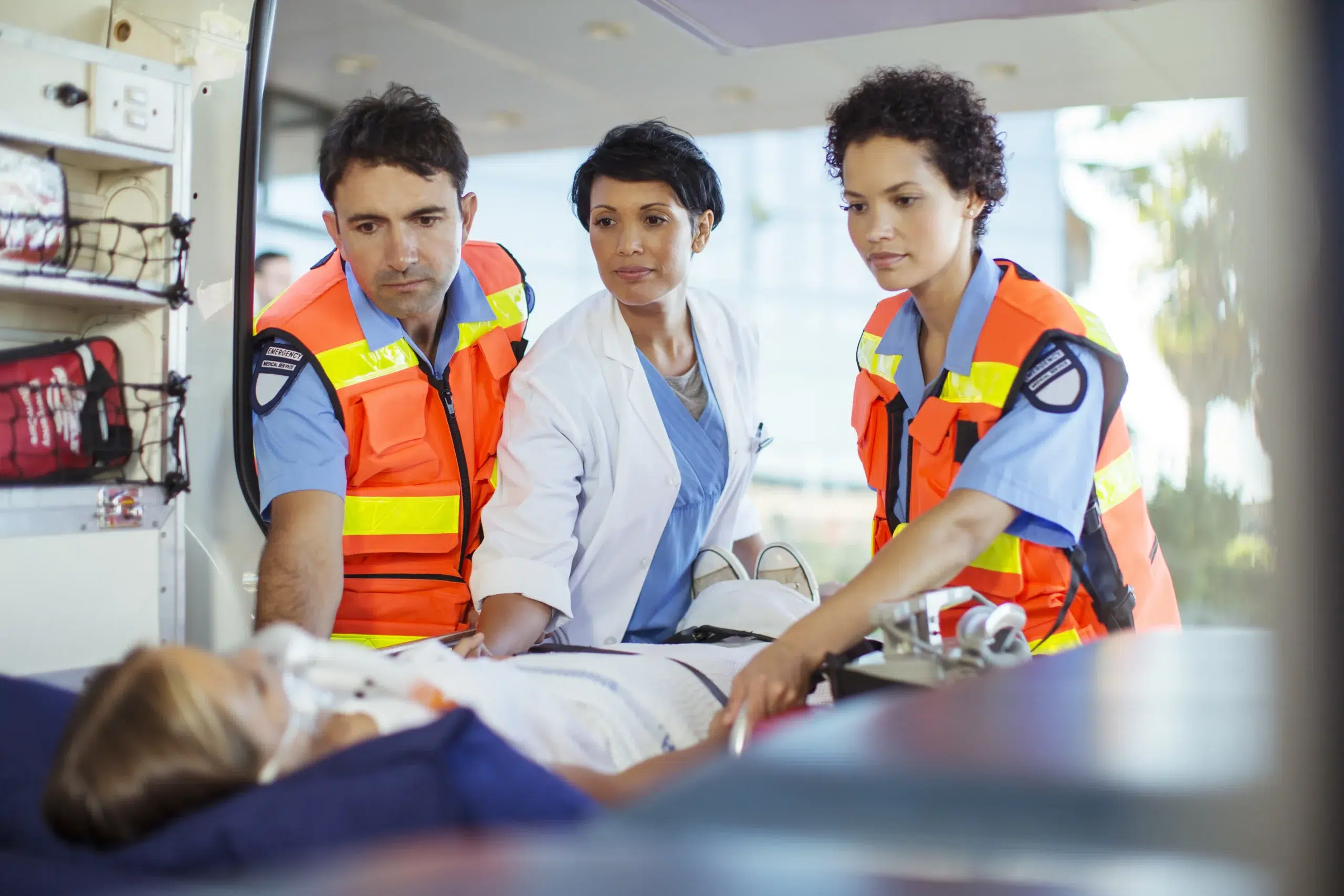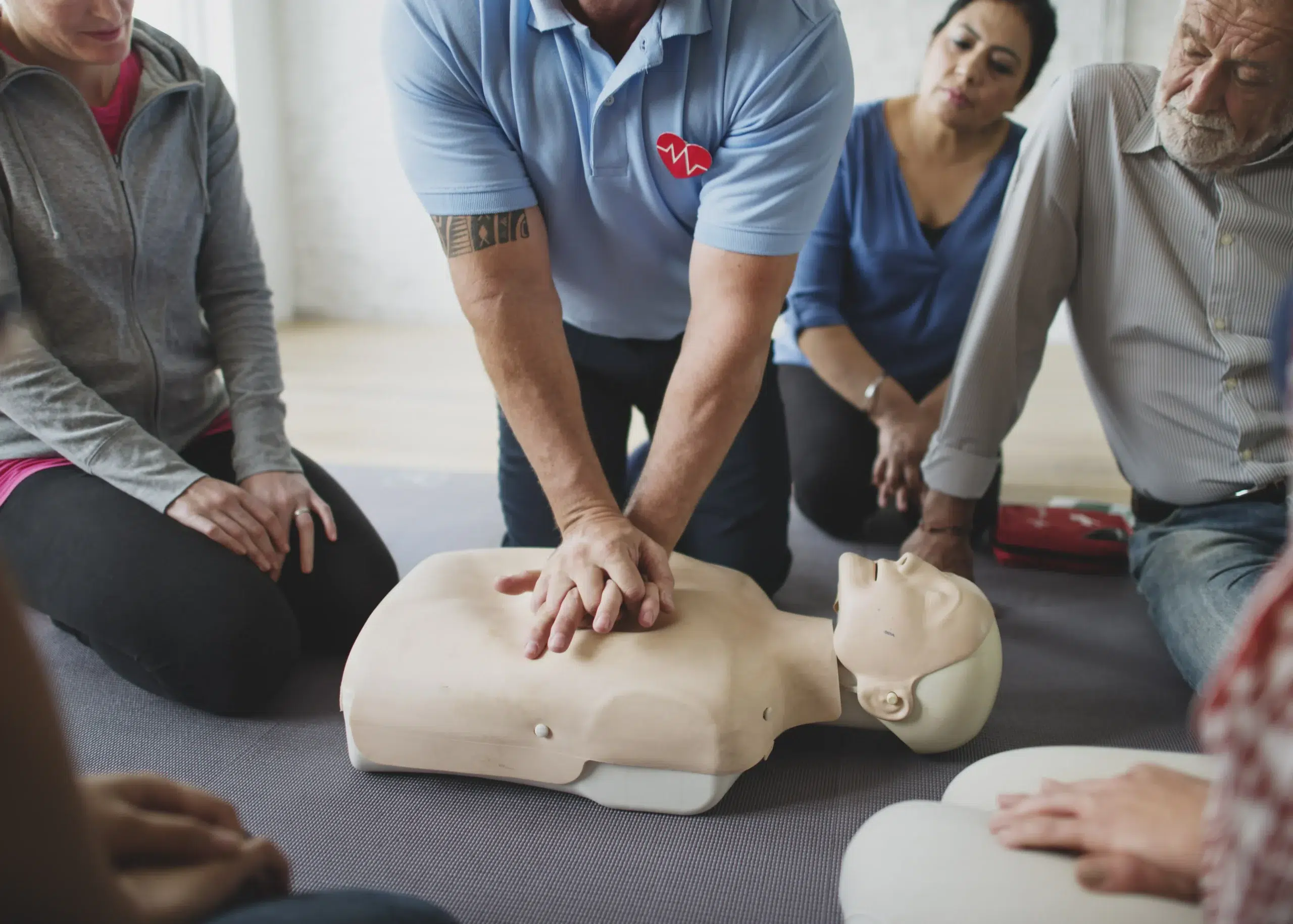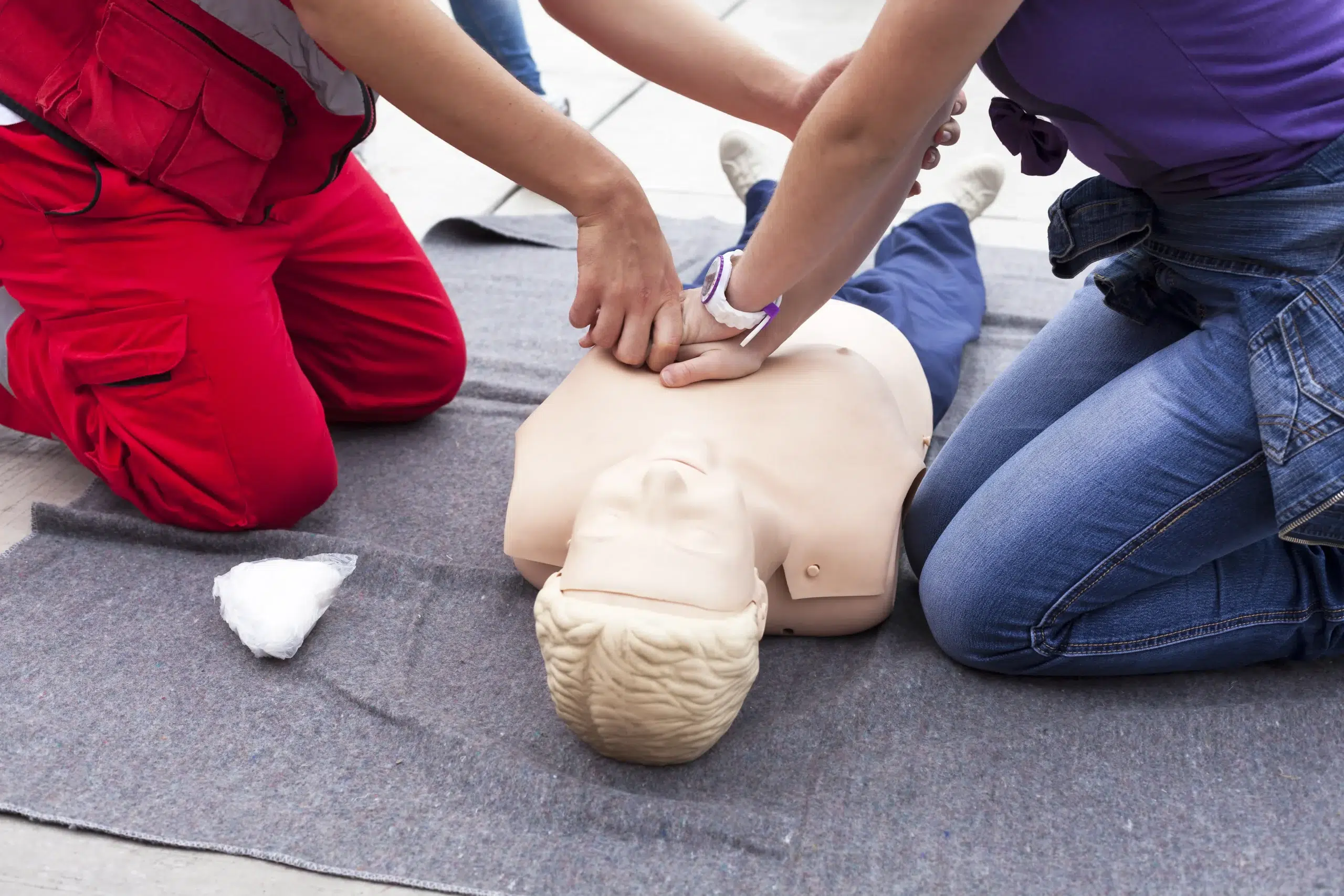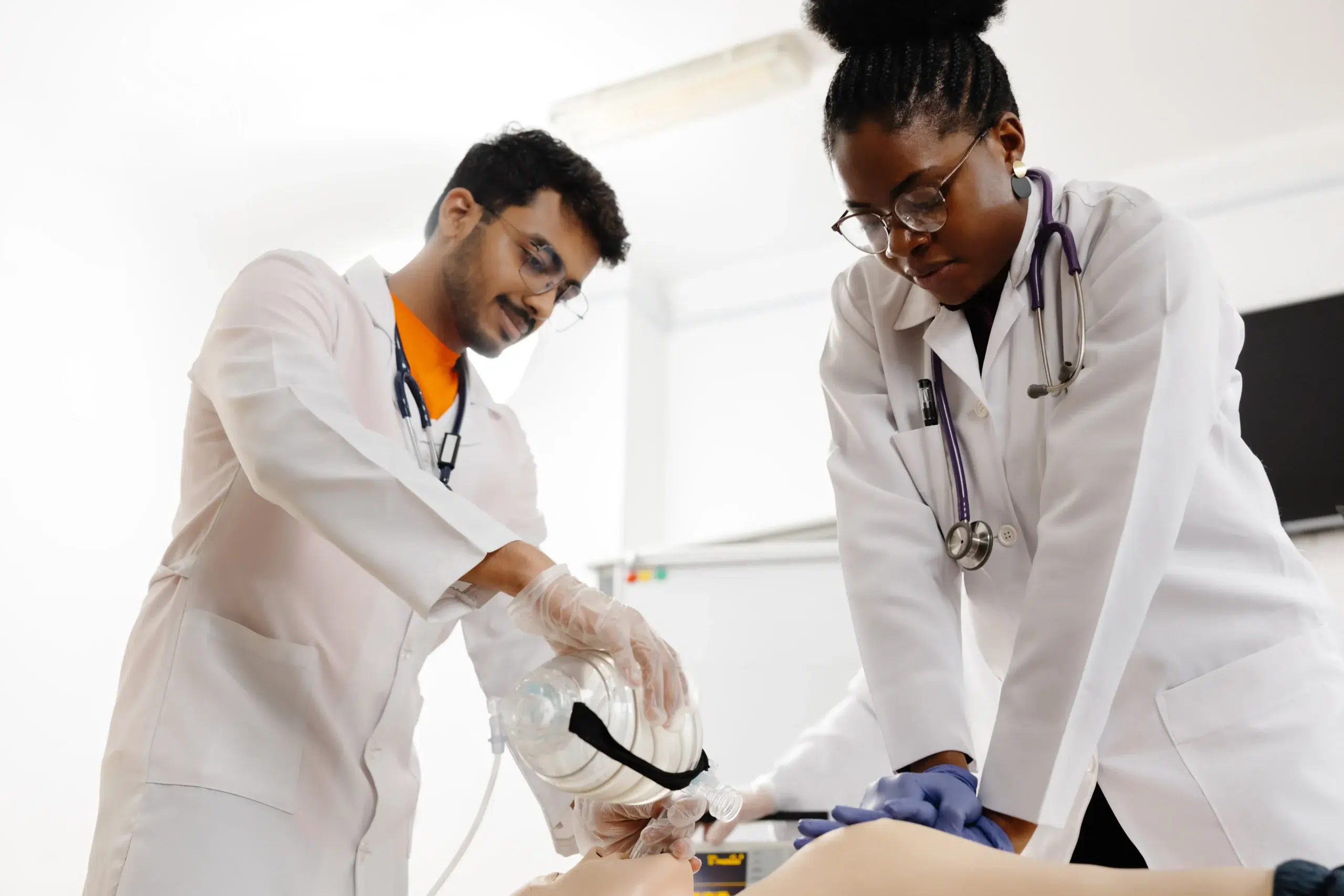Working in healthcare or a related field often means juggling a demanding schedule. Fitting in essential training like BLS recertification can feel like one more thing on an already overflowing to-do list. But what if finding a “bls recertification near me” was easier than you thought? This guide breaks down the BLS recertification process, offering practical advice and resources to streamline your renewal. We’ll cover everything from understanding the core skills and finding the right course format to managing costs and preparing for your recertification. Whether you’re looking for online convenience or prefer in-person instruction, we’ll help you find a course that fits your needs and keeps your life-saving skills sharp.
Key Takeaways
- Maintain your life-saving skills with BLS recertification: Regularly updating your BLS certification ensures you’re prepared for emergencies and confident in your abilities. Choose a course format—online, in-person, or blended—that suits your needs.
- Select a reputable training provider: Look for AHA-certified courses, experienced instructors, and comprehensive materials. Consider factors like cost, location, and schedule when making your decision.
- Prepare for a smooth recertification process: Review BLS guidelines, practice key skills, and gather required materials beforehand. Keeping your certification current demonstrates your commitment to providing effective care.
What is BLS Recertification?
What is BLS & Why Recertify?
Basic Life Support (BLS) certification equips healthcare providers, and other professionals like lifeguards and fitness instructors, with the skills to respond to medical emergencies. It’s a cornerstone for anyone who might need to provide immediate care during a crisis. Your BLS certification is valid for two years. After it expires, there’s no grace period—you’ll need to recertify to maintain your credentials and stay current with the latest life-saving practices. This involves completing a recertification course and passing an exam. Holding a current BLS certification demonstrates your commitment to providing high-quality care and ensures you’re prepared to handle emergencies confidently. BLS provides essential skills like CPR, using an AED, and relieving airway obstructions, preparing you for various medical situations.
Key BLS Recertification Skills
All BLS recertification courses cover the same core skills: CPR, AED use, and how to relieve airway obstructions in adults, children, and infants. Many courses use real-life emergency scenarios to give you practical training and build your confidence. You’ll also learn about key changes from the 2015 American Heart Association (AHA) guidelines, including the Chain of Survival, one and two-rescuer CPR, and AED use (for adults, children, and infants). The curriculum also covers the differences in rescue techniques for different age groups, bag-mask techniques, rescue breathing, choking relief, and CPR with advanced airways. These skills are essential for responding effectively to various medical emergencies. Consider our ACLS course to expand your skillset further.
Find BLS Recertification Courses Near You
Finding the right BLS recertification course doesn’t have to be a headache. Whether you prefer online convenience or the hands-on experience of an in-person class, several options are available to fit your needs and schedule. Here’s how to find a course that works for you:
Search Online
Starting your search online is often the quickest way to find BLS recertification courses nearby. The Red Cross website offers a convenient search tool to locate classes in your area, including online options. Simply enter your zip code to see what’s available. Many other training providers also have online search tools, so explore different websites to compare courses and schedules.
Local Training Centers
Check with local training centers in your community. Established providers like Oakland CPR Courses often offer a range of courses, including BLS recertification. Contacting them directly can give you a better understanding of their class sizes and any specific requirements.
AHA Options
If you’re looking for American Heart Association (AHA) certified training, Oakland CPR Courses offers BLS certification and recertification through the AHA. This ensures your training meets nationally recognized standards and provides you with a widely accepted certification card. The AHA website also has a search tool to find other certified training centers in your area.
Red Cross Offerings
The American Red Cross is another reputable option for BLS recertification. They offer both in-person and online courses, giving you flexibility. Check their website for course availability and registration information.
Oakland CPR Courses
For those in and around Oakland, California, Oakland CPR Courses provides convenient in-person BLS renewal courses throughout the week. They offer competitive pricing and focus on excellent customer service, making them a popular choice for healthcare professionals in the Bay Area. Their website provides details on course schedules, pricing, and how to register.
Course Formats & Duration
When it comes to BLS recertification, you have several options depending on your learning style and schedule. Let’s break down the most common course formats: in-person, online, and blended learning.
In-Person Classes
Traditional in-person classes provide a hands-on learning environment ideal for those who thrive in a structured setting. These courses offer direct interaction with certified instructors, allowing for immediate feedback and personalized guidance. In-person training emphasizes practical skills development and often includes demonstrations and practice scenarios. For those seeking a nationally recognized program, the American Heart Association offers BLS courses that meet industry standards. This format is a great option if you prefer face-to-face instruction and value the opportunity to ask questions and learn alongside your peers.
Online Options
For those seeking greater flexibility, online BLS recertification courses offer a convenient alternative. You can complete the coursework at your own pace, fitting it around your busy schedule. While some worry about the effectiveness of online-only options, many reputable organizations, including the American Heart Association, offer blended learning CPR courses that combine online modules with in-person skills sessions. This approach ensures you receive both the theoretical knowledge and the practical training necessary for effective BLS.
Blended Learning
Blended learning combines the convenience of online learning with the hands-on experience of in-person training. This format typically involves completing online modules covering the theoretical aspects of BLS, followed by an in-person skills session to practice and demonstrate your proficiency. This combined approach allows for flexibility while still providing the essential hands-on component.
Typical Course Lengths
BLS recertification courses vary in length depending on the format and provider. In-person classes typically range from 2.5 to 4.5 hours, according to resources like Red Cross BLS Training. Online portions of blended learning courses can often be completed more quickly, but the required in-person skills check-off will add to the overall duration. It’s essential to factor in both the online and in-person components when considering this format. For specific course lengths and schedules, check with your chosen provider, such as Oakland CPR Courses, for the most up-to-date information. BLS course costs vary, but you can expect to pay around $90 for initial certification and $60 for renewal (per person).
BLS Recertification Costs
Getting recertified in Basic Life Support (BLS) doesn’t have to break the bank. Understanding the typical costs will help you budget effectively and avoid overspending. Let’s break down the expenses involved.
Average Prices
BLS recertification courses are generally affordable. You can expect to pay around $60 for renewal courses, while initial certification usually costs around $90. Keep in mind that these are average prices, and the actual cost can vary based on your location and the training provider. Oakland CPR Courses strives to keep prices competitive.
Additional Fees
While the course fee covers the core training, there might be some small additional fees to consider. Some providers require a textbook, which could add $20–$25 to your total cost. Always check with the specific training center for a complete breakdown of expenses to avoid any surprises.
Factors Affecting Cost
Beyond the course and materials, think about factors that indirectly affect your overall cost. Your commute to the training center, the class schedule, and even childcare arrangements can influence your spending. Some providers offer weekend or evening classes to accommodate busy schedules, which can be a lifesaver for those juggling work and family. Consider these logistical details when choosing a BLS recertification course.
Oakland CPR Courses’ Pricing
At Oakland CPR Courses, we understand the importance of accessible training. We’re committed to offering competitive pricing on all our courses, including BLS, ACLS, and PALS certification. We also offer group discounts to make training even more cost-effective. Check out our low-price guarantee for more details.
Prerequisites & Requirements
Before signing up for Basic Life Support (BLS) recertification, it’s helpful to understand the requirements. Knowing the process ahead of time makes registering for a course that much easier.
Current Certification
Generally, you’ll need a current BLS provider card to take a BLS renewal course. This shows that you’ve completed the initial training and understand the fundamentals. Some providers, like the American Red Cross, also accept recently expired certifications (within 30 days) for recertification. Check with your chosen training center or organization, such as the American Red Cross, to confirm their specific requirements. Oakland CPR Courses accepts current and recently expired AHA BLS certifications for our renewal courses. Find out more on our BLS course page.
Recertification Time Frames
BLS certifications, especially those from the American Heart Association (AHA), are typically valid for two years. Plan to recertify before your card expires to maintain your credentials. Many training centers offer renewal courses up to 60 days after the expiration date, providing a grace period for those with busy schedules. Check our course schedule to find a BLS renewal course that fits your timeframe.
Skills Assessments
Most BLS recertification courses include a skills assessment portion. This practical test evaluates your ability to perform essential life-saving techniques correctly. Think of it as a refresher to ensure you’re ready to respond confidently in an emergency. After successfully completing the course and skills assessment, you’ll receive an updated BLS certification card, often issued the same day. Oakland CPR Courses provides same-day certification cards upon successful completion of the course and skills assessment.
Choose the Right BLS Recertification Provider
Picking the right BLS recertification provider is key to a smooth and valuable experience. Here’s what to consider:
Accreditation & Recognition
First things first, look for a provider offering courses through nationally recognized organizations like the American Heart Association (AHA). This guarantees your training meets the highest quality standards and is widely accepted. Oakland CPR Courses offers AHA-certified BLS courses, ensuring your certification is legitimate and up to par. This accreditation assures you’re receiving training aligned with current industry standards.
Instructor Qualifications
Beyond the certifications, check out the instructors’ backgrounds. Opt for instructors with real-world medical experience. Seasoned professionals can offer practical insights and connect classroom learning to real-life scenarios, making your training more effective. Experienced instructors can answer your questions and provide personalized guidance.
Course Materials & Resources
Your BLS recertification course should cover core skills like CPR, AED use, and how to clear obstructed airways for adults, children, and infants. Hands-on practice is essential, so choose programs that incorporate realistic training scenarios. Practical training will boost your confidence and prepare you for actual emergencies. Make sure the course materials are up-to-date and comprehensive.
Provider Reputation
A provider’s reputation speaks volumes. Do your research and choose a provider known for excellent instruction and respected certifications. Positive reviews and testimonials can give you a sense of their credibility and the quality of their training. A solid reputation ensures your certification holds weight in the healthcare community. Consider checking online reviews and asking for recommendations from colleagues.
Common Challenges & Solutions
Finding the right BLS recertification course can feel overwhelming, but understanding common challenges and their solutions can simplify the process. Let’s break down some typical roadblocks and how to overcome them.
Scheduling Conflicts
Juggling work, family, and other commitments can make scheduling a BLS recertification course tricky. Consider factors like your commute, work hours, and family commitments when making your decision. Look for providers that offer weekend or evening classes to accommodate busy schedules. Oakland CPR Courses offers a variety of class times to fit your needs.
Limited Availability
Depending on your location, you might find limited BLS recertification course options. Start your search early to secure a spot in a class that works for you. Choosing a reputable provider ensures you receive high-quality instruction and a valuable certification. Safety Training Seminars, our certified training center, offers a range of American Heart Association certification courses, including BLS. We offer competitive prices and serve Alameda, Oakland, and Berkeley, CA.
Online vs. In-Person
Deciding between online and in-person BLS recertification depends on your learning style and preferences. While some worry about the validity of online-only options, many reputable organizations, including the American Heart Association, offer blended learning CPR courses. These combine online coursework with in-person skills practice. Consider what works best for your learning style and the requirements of your profession. For example, the American Heart Association BLS course follows this blended learning format.
Balancing Cost & Quality
It’s natural to want affordable training, but don’t compromise quality for cost. Most BLS courses cost around $90 for initial certification, with a $60 charge for renewal (per person). Less-than-scrupulous providers may try to overcharge you, so compare pricing. Oakland CPR Courses offers a low-price guarantee and group discounts to make high-quality training accessible.
Prepare for Your BLS Recertification
Getting ready for your BLS recertification doesn’t have to be complicated. With a little prep work, you’ll be ready to renew your skills and get back to work.
Review Current Guidelines
BLS certification is essential for many healthcare professionals and others who need emergency care skills, like lifeguards and fitness instructors. Your BLS certification is valid for two years, and there’s no grace period after it expires. Make sure you know when your certification expires and schedule your recertification course ahead of time.
Practice Resources
Before your recertification course, refresh your CPR knowledge, AED use, and other essential BLS skills. You can find helpful resources and practice materials online or through your training provider. Brushing up on these skills will help you feel confident and prepared during the course. Oakland CPR Courses offers high-quality training through the American Heart Association, so you can find practice resources there.
What to Bring
While most providers will have the necessary equipment, it’s always a good idea to check with them beforehand. They can tell you exactly what you need. Often, a government-issued ID and your current BLS card are all you’ll need. Choosing a reputable provider ensures you receive excellent instruction and a valuable certification.
Post-Certification Steps
Once you’ve completed your BLS recertification course, you’ll receive a new certification card, valid for two years. Remember to keep your card in a safe place and mark your calendar for your next renewal. Healthcare practitioners can renew their BLS certification online or in person, so choose the option that best fits your schedule and learning style. Staying current with your BLS certification ensures you’re always prepared to provide critical life-saving care. For more information on how to renew your BLS certification, check out this helpful guide.
Related Articles
- BLS Certification in Oakland: The Ultimate Guide – Oakland CPR Classes
- BLS Courses Oakland: Your Complete Guide – Oakland CPR Classes
- BLS Renewal in Oakland: Your Easy Guide – Oakland CPR Classes
- Find the Right BLS Class in Oakland: Your Guide – Oakland CPR Classes
- Basic Life Support (BLS) in Oakland: Get Certified – Oakland CPR Classes
Frequently Asked Questions
How long is my BLS certification valid? BLS certification is typically valid for two years. It’s important to recertify before your current certification expires to maintain your credentials and stay up-to-date with the latest guidelines.
What if my BLS certification has already expired? Many training centers offer a grace period, allowing you to recertify within a certain timeframe after your certification expires. Check with your chosen provider, such as Oakland CPR Courses, to see if they offer a grace period and what their specific policy is. You might need to take the full BLS course again if your certification is significantly expired.
What’s the difference between online and in-person BLS recertification? Online courses offer flexibility, allowing you to complete the coursework at your own pace. In-person classes provide a structured learning environment with direct interaction with instructors. Blended learning combines online modules with an in-person skills session. The best option depends on your learning style and schedule.
How much does BLS recertification cost? BLS recertification typically costs less than initial certification. Expect to pay around $60 for renewal, while initial certification is usually around $90. Prices can vary depending on the training provider and your location. Check with your chosen provider for their specific pricing.
How can I find BLS recertification courses near me? You can search online using resources like the Red Cross or American Heart Association websites, which often have search tools to locate training centers in your area. You can also contact local training centers directly or check with community organizations. Oakland CPR Courses offers BLS recertification in Oakland, California.
